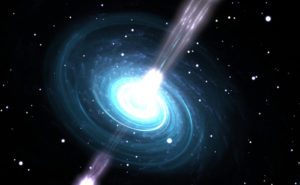
Radio telescopes have been crucial to some significant discoveries regarding the nature of the universe. Now, though, they’re verifying the basic rules of the cosmos. An international group of astronomers has shown that Einstein’s theory of gravity holds up even in more extreme situations. The team spent six years using a trio of radio telescopes (Arecibo, Green Bank and Westerbork Synthesis) to track an unusual three-star system with a pulsar bracketed by two white dwarfs — a textbook example of extreme gravity in action. How that pulsar moved would determine whether or not Einstein’s concept passed muster.
For the theory to survive scrutiny, one of the white dwarves had to be responsible for moving the pulsar. That would lead to receiving pulses at specific times. If the dwarf wasn’t affecting the pulsar’s movement, those pulses would arrive at unexpected times. Sure enough, that dwarf was responsible and the theory checked out.
This isn’t about to lead a unified theory that links gravity to quantum mechanics, but it was more effective than previous tests “by a factor of 10,” according to the University of Wisconsin-Milwaukee’s David Kaplan. This could just be the start of more tests, too, as in-development radio telescopes like the Square Kilometer Array promise to find more of these ‘ideal’ pulsar systems. Should they find enough, they could either reinforce Einstein’s theory or find an example that breaks the rules.
This article originally appeared on Engadget.


